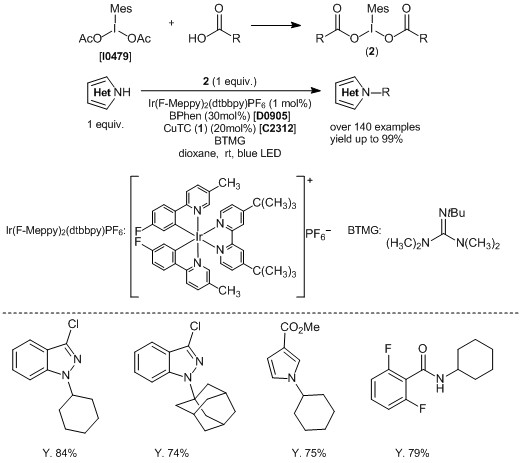It has come to our notice that certain fraudulent individuals or entities are misusing our Company’s name and TCI’s registered trademarks by promoting and offering regulated and hazardous chemical substances through online platforms like YouTube. We hereby categorically clarify that TCI has no association or connection whatsoever with the products being displayed or sold in the videos. These products have been falsely represented as being associated with TCI, and the unauthorized use of our trademark and brand name is both illegal and misleading. TCI Chemicals markets and sells its products exclusively through its official website and authorized distributors. If you become aware of any such fraudulent activity or require clarification, you may reach out to us at: Sales-IN@TCIchemicals.com. Click Here to View the Caution Notice.
Product Document Searching Made Easy by 2D Code! | [Product Highlights] Endogenous Biotin-Blocking Reagent...Maximum quantity allowed is 999
Please select the quantity
Copper/photoredox-catalyzed Decarboxylative sp3 C–N Coupling Reaction of N-Heteroaromatics
MacMillan and co-workers have recently utilized copper(I) 2-thiophenecarboxylate (1) as a catalyst for a C-N coupling reaction of N-heteroaromatic derivatives in the presence of photoredox catalyst. For example, iodomesitylene dicarboxylate (2) prepared from iodomesitylene diacetate and alkylcarboxylic acids reacts with N-heteroaromatic derivatives. The Ir complex, 1 and bathophenanthroline act as a catalyst to give the corresponding N-alkyl heteroaromatic products in good yields. This reaction can proceed when using a carboxylic acid neighboring a sterically hindered alkyl group such as adamantyl group. Furthermore, the C-N coupling is utilized by the amide nitrogen, carbonate and sulfone amides. In this way, this reaction is expected to be use in late-stage C-N coupling of research of pharmaceuticals, as well as late-stage total synthesis.

Related Products
Reference
- Decarboxylative sp3 C–N coupling via dual copper and photoredox catalysis

